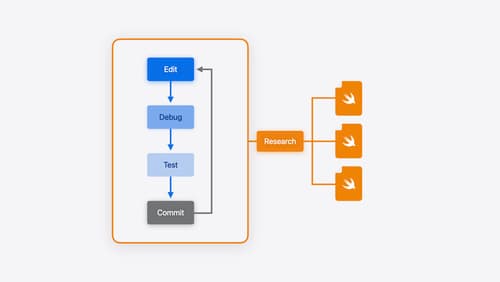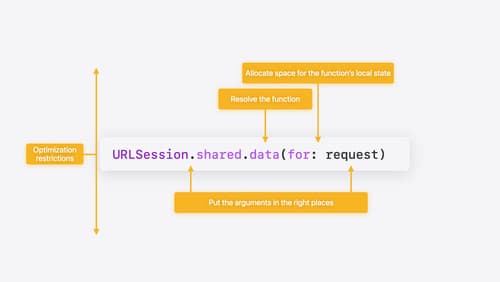How to optimize startup time?
Asked on 2025-01-01
1 search
To optimize startup time for your app, you can use several tools and techniques discussed in the WWDC sessions:
-
Use Instruments in Xcode: The Time Profiler instrument in Xcode can help diagnose performance problems by visualizing CPU usage and measuring how long code execution takes. You can set the inspection range to focus on specific intervals, such as a hang during the initial launch, and use the new flame graph feature to get a high-level overview of execution. This can help identify code that takes the most time to execute, allowing you to optimize it. For example, if you find that assets are being loaded serially on the main thread, you can parallelize the loading using a task group and move execution to the background. What’s new in Xcode 16.
-
Optimize Disk Writes and Slow Launch Diagnostics: Xcode's organizer now includes diagnostics for excessive disk writes and slow app launches. It shows the slowest code path signatures, helping you prioritize fixes that have the largest impact on performance. This can be particularly useful if your app takes a long time to launch on customer devices. What’s new in Xcode 16.
-
Consider Swift Performance Principles: Understanding low-level performance principles in Swift can also help optimize startup time. This includes minimizing unnecessary function calls, optimizing memory allocation, and reducing value copying. Regularly monitoring performance and automating measurements can help identify regressions and ensure the optimizer is effectively improving performance. Explore Swift performance.
By leveraging these tools and techniques, you can effectively diagnose and optimize your app's startup time, leading to a better user experience.

Xcode essentials
Edit, debug, commit, repeat. Explore the suite of tools in Xcode that help you iterate quickly when developing apps. Discover tips and tricks to help optimize and boost your development workflow.

Design advanced games for Apple platforms
Learn how to adapt your high-end game so it feels at home on Mac, iPad, and iPhone. We’ll go over how to make your game look stunning on different displays, tailor your input and controls to be intuitive on each device, and take advantage of Apple technologies that deliver great player experiences.

Explore Swift performance
Discover how Swift balances abstraction and performance. Learn what elements of performance to consider and how the Swift optimizer affects them. Explore the different features of Swift and how they’re implemented to further understand the tradeoffs available that can impact performance.
